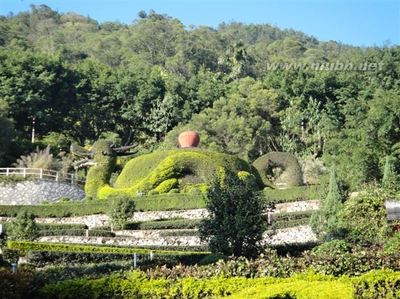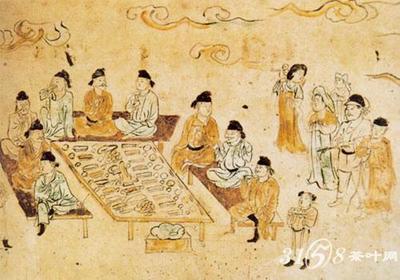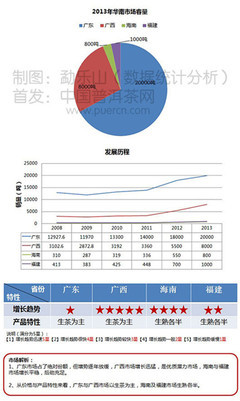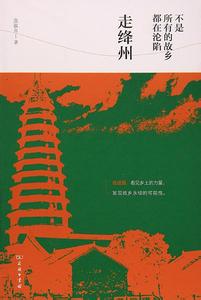唐代是茶叶文化的形成时期,茶饮之风极盛,遍及社会的各个阶层,与此同时,茶叶贸易和茶器手工艺制作也兴旺起来了。下面是小编带来的关于中国茶文化英语文章,欢迎阅读!
关于中国茶文化英语文章篇一
Chinese Tea Culture 中国茶文化
he Chinese people, in their drinking of tea, place much significance on the act of "savoring." "Savoring tea" is not only a way to discern good tea from mediocre tea, but also how peopletake delight in their reverie and in tea-drinking itself. Snatching a bit of leisure from a busyschedule, making a kettle of strong tea, securing a serene space, and serving and drinking teaby yourself can help banish fatigue and frustration, improve your thinking ability and inspireyou with enthusiasm. You may also imbibe it slowly in small sips to appreciate the subtleallure of tea-drinking, until your spirits soar up and up into a sublime aesthetic realm.Buildings, gardens, ornaments and tea sets are the elements that form the ambience forsavoring tea. A tranquil, refreshing, comfortable and neat locale is certainly desirable fordrinking tea. Chinese gardens are well known in the world and beautiful Chinese landscapes aretoo numerous to count. Teahouses tucked away in gardens and nestled beside the naturalbeauty of mountains and rivers are enchanting places of repose for people to rest and recreatethemselves.
China is a country with a time-honored civilization and a land of ceremony and decorum.Whenever guests visit, it is necessary to make and serve tea to them. Before serving tea, youmay ask them for their preferences as to what kind of tea they fancy and serve them the tea inthe most appropriate teacups. In the course of serving tea, the host should take careful noteof how much water is remaining in the cups and in the kettle. Usually, if the tea is made in ateacup, boiling water should be added after half of the cup has been consumed; and thus thecup is kept filled so that the tea retains the same bouquet and remains pleasantly warmthroughout the entire course of tea-drinking. Snacks, sweets and other dishes may be servedat tea time to complement the fragrance of the tea and to allay one's hunger.
中国人饮茶,注重一个“品”字。“品茶”不但是鉴别茶的优劣,也带有神思遐想和领略饮茶情趣之意。在百忙之中泡上一壶浓茶,择雅静之处,自斟自饮,可以消除疲劳、涤烦益思、振奋精神,也可以细啜慢饮,达到美的享受,使精神世界升华到高尚的艺术境界。品茶的环境一般由建筑物、园林、摆设、茶具等因素组成。饮茶要求安静、清新、舒适、干净。中国园林世界闻名,山水风景更是不可胜数。利用园林或自然山水间,搭设茶室,让人们小憩,意趣盎然。
中国是文明古国,礼仪之邦,很重礼节。凡来了客人,沏茶、敬茶的礼仪是必不可少的。当有客来访,可征求意见,选用最合来客口味的茶叶和最佳茶具待客。主人在陪伴客人饮茶时,要注意客人杯、壶中的茶水残留量,一般用茶杯泡茶,如已喝去一半,就要添加开水,随喝随添,使茶水浓度基本保持前后一致,水温适宜。在饮茶时也可适当佐以茶食、糖果、菜肴等,达到调节口味和点心之功效。
关于中国茶文化英语文章篇二
Chinese Tea Culture
Ladies and Gentlemen:
It’s my honor to stand here and make a speech. My topic is “Chinese Tea Culture”.
Do you know the name of the three most famous drinks in the world? They are tea , coffee and cocoa. China is the homeland of tea which has become the national drink. In other words, tea is basically spread out from China. Referring to Chinese tea culture, it has several the
tea, Oolong tea, scented tea, white tea, yellow tea and dark tea. In the early days, the Chinese boiled their tea leaves with water and other ingredients such as salt and ginger; later they ground the dried leaves to a powder and whipped them up with hot water. It was not until that Ming Dynasty that it became common practice to infuse the loose tea leaves in hot water in teapots, and then to pour the infused liquid into bowls to drink. Nowadays, we make different tea in different particular ways. Over the centuries, China developed an extraordinary tea culture, comparable with the wine culture of the West.
Tea not only has a good flavor but also benefit to our body, so it is loved by many people home and abroad. Different kinds of tea have different function which makes a contribution to our health. For example, the national drink of China-green tea, can dispel the effects of alcohol, clear away summer-heat, refresh yourself and whiten your skin. The second largest kind of tea-black tea, can warm your stomach, be good for your heart and make your bones stronger. Dark tea can refresh you in the morning, reduce your blood press and help lose weight. Oolong Tea is good for your body building and dieting. In all, tea have great medicinal value,anti-cancer, lowering blood pressure, improving eyesight and restraining disease, reducing stress and so on.
Tea culture and its development reflect not only diet culture, but also Chinese spiritual features.
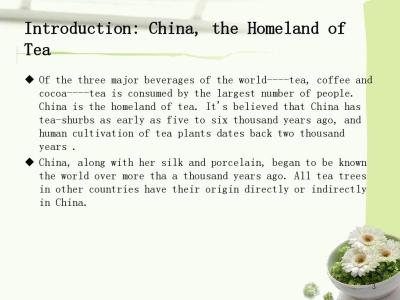
China is a country with a time-honored civilization and a land of ceremony and decorum. Whenever guests visit, it is necessary to make and serve tea to them. Before serving tea, you may ask them for their preferences as to what kind of tea they fancy and serve them the tea in the most appropriate teacups. In the course of serving tea, the host should take careful note of how much water is remaining in the cups and in the kettle. Usually, if the tea is made in a teacup, boiling water should be added after half of the cup has been consumed; and thus the cup is kept filled so that the tea retains the same bouquet and remains pleasantly warm.
Tea culture plays an indispensable role in promoting the international cultural exchange between China and other countries, enriching Chinese cultural life and promoting Chinese spiritual civilization construction.
In conclusion, tea culture is one of the essences of Chinese culture in the history. The spirit of tea permeates the court and society, into the Chinese poetry, painting,calligraphy, religion, medicine. For thousands of years China has not only accumulated a great deal about tea cultivation, production of material culture, but also accumulated rich spirit of the tea culture, which is unique to China's tea culture.
关于中国茶文化英语文章篇三
杭州茶文化
Tea is Hangzhou's lifeblood, and the way it seeps into social life has been celebrated for centuries. Deng Zhangyu and Erik Nilsson report.
Longjing tea infuses life in Hangzhou, in every sense.
The light brew exerts a heavy influence over the city's mentality.
Consequently, Zhejiang's provincial capital is also known as China's "tea capital".
Poet Xie Lingyun brought tea to the city 1,500 years ago, and its West Lake area has since sired Longjing tea, one of the country's most famous varieties.
Longjing is green gold. Actually, premium picks have sold for more than an equal amount of the precious metal.
It was officially listed as an imperial tea by Emperor Kangxi (1654-1722). His grandson, Qianlong (1711-99), designated 18 plants as imperial trees. (At least according to lore.)
These trees still stand in what's today the Imperial Tea Garden, just up the road from Longjing village's China National Tea Museum.
The museum, set among plantations that emanate from surrounding peaks near chockablock teahouses run by farmers, is regarded among China's most beautiful.
Six exhibition halls present the plant's social and scientific dimensions-from history to health, customs to chemicals-with displays that range from early relics to the latest research.
The establishment chronicles how tea drinking emerged from China's southwestern jungles as a medicinal concoction to become the sophisticate's pour of choice-and eventually the world's most popular beverage (after water).
Legend holds that its homeopathic properties were divined nearly five millennia ago by Shennong, a quasi-mythical medicine man sometimes depicted as sporting ox horns.
About 2,500 years later, a monk in Southwest China cultivated the plants in a temple-a trend that spread throughout the nation. Visiting Chinese elite got their first taste during pilgrimages to these places of worship.
Tea retains a spiritual component, and Longjing, in particular, has for centuries been associated with Chan Buddhist meditation.
And it sustains a sacred role in contemplative intellectual pursuits, as painters, poets and artists have incorporated it in their creative processes for centuries.
Hangzhou's history as a prosperous place due to abundant natural resources means it was frequently graced by the likes of emperors and illuminati.
"The elite and the ordinary have long enjoyed tea in Hangzhou," says the museum's director, Wu Xiaoli.
Today, professors and drivers consider Longjing a staple, even though a half-kilogram of low-grade leaves cost around 1,000 yuan ($150).
Local tea expert Pang Ying attributes Longjing's status to the natural environment and cultural heritage of hand processing.
"A Chinese adage says flavorless tea is perfect tea," Pang says.
"Longjing is as light as the city's mountains and waters."
Hangzhou's Hupao Spring-said to have been excavated by two tigers-is specifically believed to provide the best water for brewing Longjing.
"The art of tea drinking is a balance between food and tea," Pang says.
Longjing is Hangzhou's drink of choice because people eat lightly flavored fish and shrimp.
Pang owns three teahouses in the city, including one on West Lake's bank-recognized as prime place for people hoping to drink in local tea culture.
It's more than the mere act of drinking, Wu says.
"Tea is ingrained in Hangzhou people's genes," he says.
He grew up drinking it in Meijiawu village, a place with premium plantations near the museum.
He and primary school classmates helped harvest Longjing before the Tomb Sweeping Festival, when the shoots are believed to be at their best, in the 1970s.
Frying the leaves-a process to halt oxidation shortly after harvest to seal in the green tea's superlative qualities-was inscribed as a national-level intangible heritage in 2008.
Visitors to the museum's new branch-opened in a hillside plantation in Longjing village last year to focus more on activities than exhibitions-can study customs surrounding Longjing and other teas, such as serving ceremonies.
The museum receives more visitors from abroad than any other in Hangzhou, Wu says.
It stands near the well from which Longjing claims its eponym, which translates as Dragon Well. The appellation hails from the ancient belief the shaft was a portal to a dragon's lair, since it sustained the sole water source during droughts.
This history-or at least lore-today charms visitors enchanted by Longjing's cultural cultivation.
 爱华网
爱华网